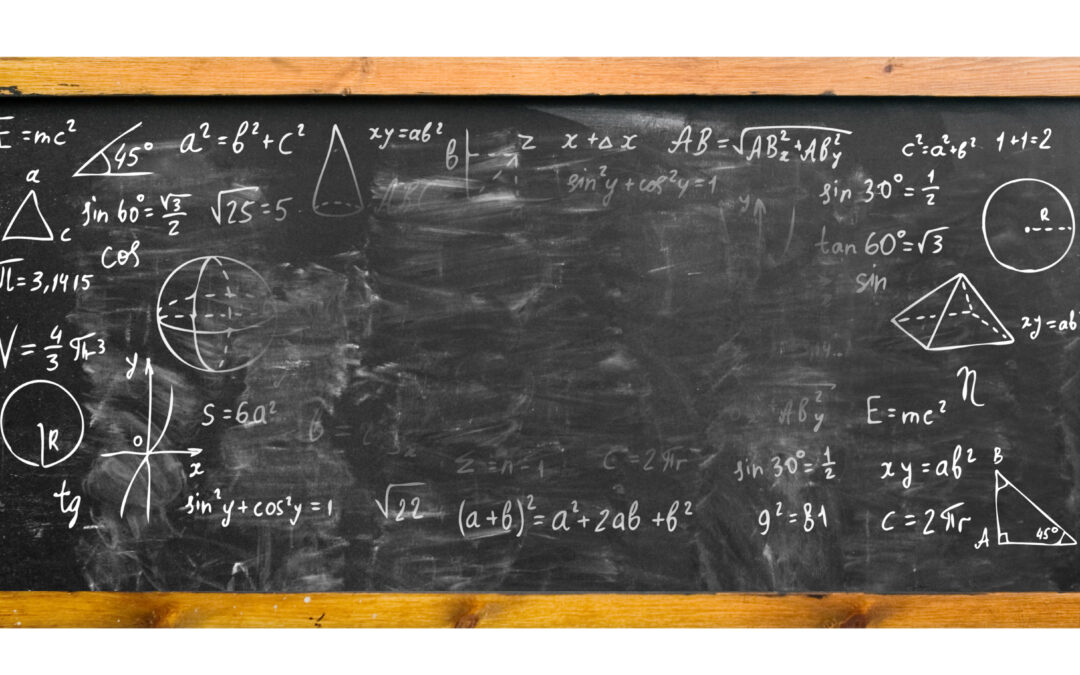Guest Author: Dr. C.J. Riley, Professor of Civil Engineering, Oregon Institute of Technology
When I was approached to write this blog post about math in engineering and construction, I immediately thought of the shared use of quantities with units, physical measures that both engineers and contractors use to do our work. In many ways, the way we use math differs only in what we want to understand and the goals of our work.
Engineers
For engineers, our interest is usually the mechanisms at the heart of structural behavior, soil capacity for our constructions, flows through channels and pipes, and traffic through streets. Our units deal with forces (pounds, tons) and distances or dimensions (inches, feet, miles). We combine them into composite units to consider pressures and stresses (pounds per square inch or psi, tons per square foot or tsf) and enter a world of mathematical models that pushes into increasingly complex relationships and tools (calculus, differential equations, linear algebra, etc.). But ultimately, we’re still just counting physical things and comparing them with limits we have figured out through testing and millennia of experience with success and failure.
Contractors
For contractors and crafts people, the goal is turning ideas into reality in a physical world by leveraging people, materials, and equipment to get things done on time and under budget. The units are the numbers of these things: numbers of people with certain expertise, numbers of bolts or boards, numbers of compactors or graders, and of course hours and minutes and dollars. Put more simply, contractors deal in quantities, time, and cost (everyone knows the project management triangle of scope, schedule, and budget). Like engineers, contractors work with composite units that combine these basic units: charge-out rates (dollars per hour), unit costs (dollar per quantity), and productivity (output per hour). We add, subtract, multiply, and divide our way to the bigger picture of a project schedule and budget.
The Math We Share
In both engineering and construction, if you follow the units, the math emerges and the relationships become clear. We can build a model of a whole structure, pipe network, or transportation system and break it down into its constituent parts. Like a chain of unique links, we determine the capacity of each link and ensure that each can support the load we place on the completed chain. Taking this a step further, we can anticipate how much that completed chain will stretch based on the behavior of each link and we can plan for different types of loading: fast, slow, repeated, sustained. We can anticipate performance in a variety of conditions to be sure the infrastructure we design can stand the test of time.
In the same way we can take a project scope, schedule, and budget and build that bigger picture using our knowledge of unit costs, productivity, and quantities. We can ensure that each one is possible in space and time and when we combine them realistically, we are able to build our vision.
Risk and Uncertainty
While the math we use and the quantities we measure may vary, engineers and contractors, indeed all of us, live in a real world with risk and uncertainty. We all contend with best-case and worst-case scenarios, and we make decisions that account for variability; happy when things go as planned and frustrated when we don’t hit the mark. If we haven’t studied statistics formally, we get a crash course as we navigate our careers and experience successes and failures, building our own personal model of what works and what doesn’t. For engineers, the study of statistics is critical because avoiding failure is why we get hired. For contractors, managing risk means winning contracts and staying in business or blowing a budget and looking to the more reliable jobs to pay for the loss. This is a math that we share more than any other.
For a post on math, this didn’t have any numbers, which is perhaps for the better. You probably see enough of those on a daily basis, and you wouldn’t read this if it were a spreadsheet. Time to get back to work making good things happen in the world, safely, as planned, on time, and under budget. Best of luck with your next calculation.
Dr. C.J. Riley is a registered professional engineer (OR) and professor of civil engineering at Oregon Tech. He completed his Ph.D. at Colorado State University in structural mechanics and has two years of experience in bridge design, rating, and software development for transportation structures with the Wyoming Department of Transportation.

